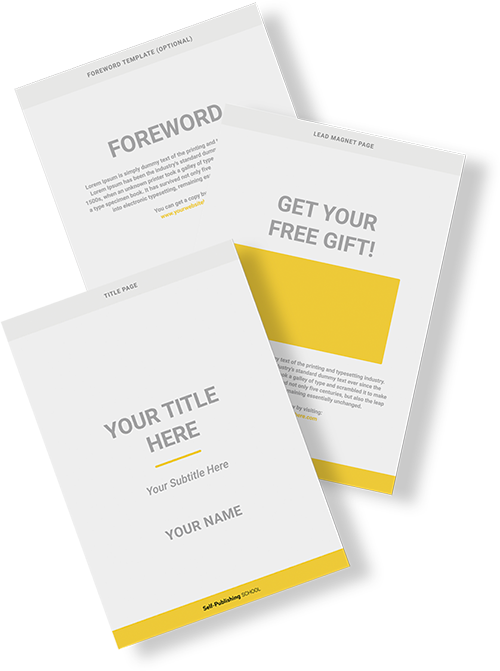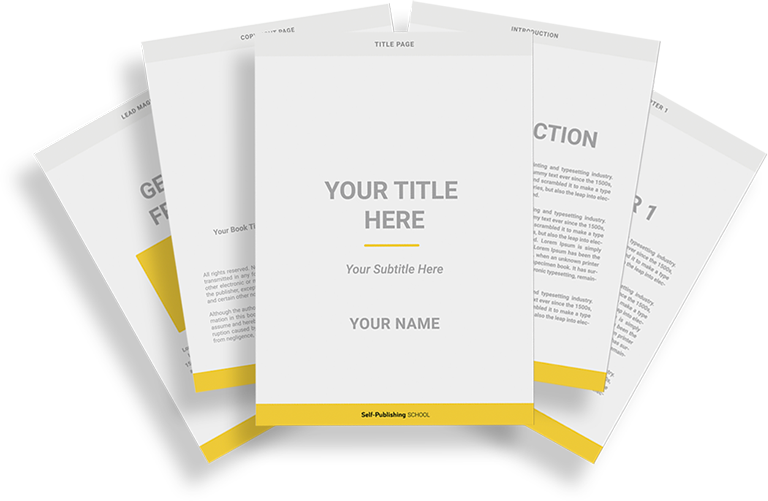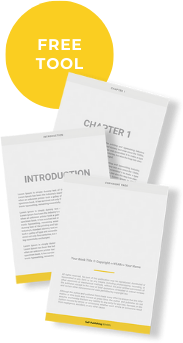A narrative device is something you use to tell a story. Narrative devices include tools like stream of consciousness, framing stories, epistolic, real-time, and unreliable.
Each type of narrative device accomplishes a different goal.
Unreliable narrators add a level of intrigue and mystery, while also revealing traits and secrets in your character.
Epistolic stories are told in diary format with things like journal entries, letters, or other written work.
Stream of consciousness usually works to pull your reader in close with your character, experiencing every thought alongside them.
A framing device is a narrative tool with many purposes related to foreshadowing, backstory, and story structure.
Let’s go over what makes a framing device, when you might use them, examples of framing devices, and how to use framing devices in fiction.


Book Outline Generator
Choose your Fiction or Nonfiction book type below to get your free chapter by chapter outline!
Book Outline Generator
Enter your details below and get your pre-formatted outline in your inbox and start writing today!
CONGRATULATIONS
Thanks for submitting! Check your email for your book outline template.
In the meantime, check out our Book Outline Challenge.

What is a framing device?
A framing device is the narrative style of using a “story within a story.”
Think of the film Titanic. The film begins when the main and narrative character, Rose, tells the story of her journey on the ship. After that opener, most of the film is about her past journey.
The two timelines work together to tell one story: Rose and Jack’s love story amongst the end result of her life that resulted from Jack’s sacrifice.
The audience gets to be certain that Rose survives from the beginning. That adds an element of trust in Jack—he’s going to help her survive. That assuredness makes the audience trust and rely on Jack’s character, which makes it easier to empathize with Rose in appreciating and then mourning him.
At the end of the movie, we get to see clear evidence of Rose’s true character: After watching the plot unfold around the diamond, Rose throws it into the sea at the end. She never sold it. She never told anyone she had it.
She kept it strictly as a memento of all that they went through, solidified by her throwing it away.
Money didn’t matter to her. She didn’t spend her life mourning Jack. She spent it honoring him by living it fully.
Another benefit to the modern framing narrative is that it helps connect present-day viewers with an historical event. It’s often difficult for the audience to connect with period pieces, so providing a modern narrative alongside can make it seem more accessible.
Particularly with the tragedy of the Titanic, if the historical event is recent enough to logically have survivors around to tell the story, why not take advantage of that?
Without the framing device of elderly Rose telling the story, we might have missed out on all of those story strengthening elements.
What are framing devices in literature used for?
Framing devices are used for many different purposes. Here are a few common instances:
- Providing structure and clarity by dividing the main plot into smaller sections
- Including clues, foreshadowing, and easter eggs/teasers
- Adding tension and intrigue. For example, while the framing device in Titanic almost provides the “spoiler” of Rose still being alive, we can’t be sure of what happened to Jack. We want to hear the whole story to see how it ends.
- Including multiple views and character voices
- Illuminating the backstory of our main character to reveal more about the present or reveal things about the character
Framing devices can be powerful literary tools, but if they’re used poorly, they could ultimately detract from the narrative.
Examples of framing devices in fiction
Let’s look at a few literary examples of framing devices and talk about why the author may have used them.
Wuthering Heights
Wuthering Heights by Emily Brontë was revolutionary in the way it used its framing device. Virtually unheard of at the time, the story of Wuthering Heights is told through a person in the “future” hearing about it from a biased person who was there for the events. That means the story is obscured through the first person’s telling of it, then by the POV character’s interpretation of her telling.
The narrator, Lockwood, is our point-of-view character in the framing narrative. He’s a classically unreliable narrator, misunderstanding things and contradicting his own opinions.
Nelly, the person recounting the story, is biased in her telling of it.
This framing narrative gives the story multiple layers of complication and much to interpret.
Some literature analysts think Brontë was commenting on male bias with this skewed narration, while others see it as an exploration of narrative authority and bias.
The framing device in Wuthering Heights not only serves as a conduit for the story, but it also adds layers of character complexity and intrigue.
The Princess Bride
In The Princess Bride, William Goldman uses the framing device of a grandfather reading his grandson a story. The story is that of the princess bride.
In the film adaptation, this framing device is maintained. It opens with the grandfather visiting his sick grandson and reading to him. Throughout the film, short clips of the grandfather and grandson’s interactions interrupt the story.
The framing narrative scenes are cute, funny, and endearing.
Why exactly does this story use a framing device? It’s fun, but is it actually necessary?
When we think about the overarching themes of The Princess Bride, we’ve got a few relevant ones: storytelling, life not being fair, love stories, bad guys vs good guys… The story is about stories.
Westley says, “Life is pain, Highness. Anyone who says differently is selling something.” But the story and its ending fully contradict this—real life is painful, certainly. But in a story, that doesn’t have to be the case.
The story is told through a grandfather narrating it to his grandson, with intercuts of the grandson complaining about how it isn’t fair:
“Who kills Prince Humperdinck?”
“That’s it? The bad guy just gets away?”
“But Westley’s not really dead…right?”
One of the grandfather’s lines nicely encapsulates this theme: “Who says life has to be fair?”
But stories aren’t real life. In a way, The Princess Bride is about storytelling, so the framing device is literally what conveys that. Without it, the story wouldn’t achieve its goal.
At the end of the main storyline, Buttercup and Westley do live happily ever after, despite their trials and despite Westley’s insistence that people were created to suffer.
The main story and framing story merge most definitively in the last line of the movie: “As you wish.”
Just as Westley said to Buttercup to mean “I love you,” the grandfather leaves his grandson with the same sentiment.
Using the end of your story to tie both narratives together with a pretty bow will do a lot to make the framing device feel worthwhile.
The Canterbury Tales
The Canterbury Tales by Geoffrey Chaucer’s framing device is a group of pilgrims swapping stories to pass time on a journey.
An older story, this example serves to illustrate that many early uses of framing devices (save Brontë, who was way cooler than Geoffrey Chaucer) were simply excuses to let characters tell their stories.
In particular, this usage of framing devices could work well for a collection of shorter stories. The framing would benefit the story simply by giving some semblance of cohesive context over the body of work.
In modern media, we see this style used most often in TV series. Think of your favorite show, then think of an episode the producers inevitably include known as a “clip show.” This is when the cast of characters gather in one place and reminisce on things that have happened in past episodes.
These episodes are usually used because they’re cheaper to shoot and produce (most of the scenes already exist), plus they could be filler if there’s a gap in that season’s narrative.
How to Use Framing Devices in Fiction
Framing devices have many uses, as we touched on above. So how do we utilize them in our own writing?
#1 – Don’t let it become an exposition dump
It’s easy for a framing device portion to come off as lazy writing. If there’s no obvious relevance or intrigue to the scenes of the framing narrative, it might seem like an easier way to tell a story without thinking of how to do it naturally.
Be careful of utilizing your framing scenes as a shortcut to writing a full story.
#2 – Know why you’re using it
Arbitrarily including a framing narrative likely won’t add depth or intrigue to your story.
If you’re using a framing device in your novel, it should have a clear purpose (to you). It’s okay if the readers can’t make a direct connection between the two timelines right away (or ever, for some readers), but it’s important that you as the author understand why and how you’re using it.
If there isn’t an intentional use for a particular literary device, it’s likely being misused.
#3 – Weave the two stories together
A common format of framing narratives is two stories set in the same universe, but taking place at different times (think Titanic).
The two timelines can be totally detached (or even told by a character who had no part in the original story, like in Wuthering Heights), but there should be a common thread to connect them.
Ideally, one narrative cannot fully happen without the other.
In Titanic, we need the main storyline for the meat of it. We need the framing device to see the conclusion of Rose’s story and wrap up the big themes.
#4 – Don’t use it as the easy way out
Again, a framing device shouldn’t be used as a crutch. The story should genuinely benefit from it. If you can remove the framing narrative, change nothing else, and it doesn’t affect the story, it’s likely not necessary.
Framing narratives have their place
Like any literary device, framing narratives can be used effectively and greatly add to a story, or they can be used poorly and detract.
Be sure a framing narrative (and the type of framing) suits your book before you write it by making sure it’s necessary, you’re able to make the two timelines relevant for each other, it doesn’t feel like an exposition dump, and you’re not doing it as a writing shortcut.
As with anything in writing, whatever you do, do it intentionally.
Happy writing!
Next Steps
Ready to get your hands on a fiction book outline template?
This is just what you need:


Book Outline Generator
Choose your Fiction or Nonfiction book type below to get your free chapter by chapter outline!
Book Outline Generator
Enter your details below and get your pre-formatted outline in your inbox and start writing today!
CONGRATULATIONS
Thanks for submitting! Check your email for your book outline template.
In the meantime, check out our Book Outline Challenge.
